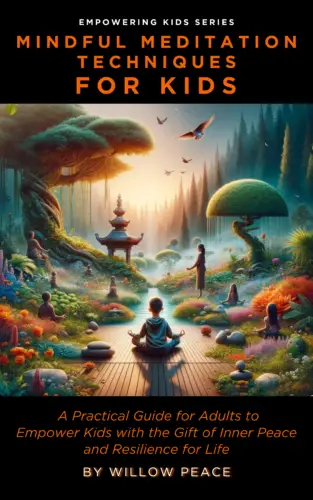By Dakota Flynn
Staff Writer for Wake Up World
The concept of self-abidance holds profound significance in the quest for self-realization and inner peace. Rooted in non-duality and spiritual traditions, self-abidance represents a state of being that transcends the illusion of separateness and connects us to the essence of our true self. This article will explore self-abidance, how it aligns with non-dual awareness, and practical steps to experience this transformative state.
What is the True Self?
The true self is the essence of who we are beyond the constructs of ego, identity, and external roles. It represents a state of pure consciousness and unconditioned awareness that exists beyond the fluctuations of the mind and the impermanence of emotions. Unlike the transient self shaped by experiences, relationships, and societal expectations, the true self is constant and ever-present, embodying the fundamental reality of our being.
In Hindu philosophy, the concept of “You are That” (Tat Tvam Asi) profoundly encapsulates this understanding. This phrase, found in the Upanishads, asserts that the true self is not separate from the ultimate reality or divine consciousness. It reveals that we are fundamentally one with the universal essence, symbolizing that what we seek externally is already within us. Recognizing and connecting with the true self allows us to experience profound inner peace, clarity, and a deep sense of interconnectedness with all of existence, affirming that our essence is indeed the same as the ultimate reality.
Understanding Self-Abidance
The Essence of Self-Abidance
Self-abidance refers to a consistent and effortless dwelling in the awareness of our true nature. It is the practice of remaining anchored in the realization that our essence is pure consciousness beyond the fluctuations of the mind and ego. This state of being is characterized by a deep sense of peace, clarity, and interconnectedness with all of existence.
Non-Dual Awareness and Self-Abidance
Non-duality emphasizes the unity of existence and the illusory nature of separation. From this perspective, self-abidance is not about achieving something new but recognizing and resting in our inherent nature. It is a return to the simplicity of being, free from the distractions of thoughts, emotions, and external circumstances.
Practices for Cultivating Self-Abidance
Meditation: Cultivating Inner Stillness
Meditation is a fundamental practice for cultivating self-abidance. It provides an approach to quieting the mind and directing our attention inward. Setting aside dedicated time each day to sit in silence creates a sanctuary where self-abidance can naturally emerge.
Mindfulness Meditation: This technique focuses on the breath or bodily sensations, gently guiding the mind back to the present moment whenever it drifts. Over time, mindfulness meditation helps develop a deep sense of awareness and presence, which is essential for self-abidance.
Transcendental Meditation: This form of meditation uses a specific mantra to transcend ordinary thinking and access a state of pure consciousness. Regular practice can facilitate a profound experience of inner peace and clarity, aligning with the essence of self-abidance.
Self-Inquiry Meditation: Incorporating self-inquiry into meditation involves asking the question, “Who am I?” and turning our attention inward to explore the nature of the self. This practice aids in uncovering our true nature beyond the ego and thoughts, nurturing a deeper connection with self-abidance.
Self-Inquiry: Uncovering the True Self
Self-inquiry, as taught by sages like Ramana Maharshi, is a transformative practice involving deep exploration of our consciousness. The core of self-inquiry is the question, “Who am I?”—a powerful tool for transcending the ego and realizing our true nature.
The Process of Self-Inquiry: Begin by sitting in a quiet place and focusing inward. Ask yourself the question, “Who am I?” and observe the responses that arise in your mind. Notice how these responses are often tied to external identities and roles. As you persist in the inquiry, you’ll start to recognize that these responses are not the true self but rather transient thoughts and sensations.
The Role of the Witness: During self-inquiry, it’s helpful to cultivate the perspective of the witness—an observer who remains detached from the thoughts and experiences that arise. By identifying with this witness consciousness, you can more easily discern the essence of your being, free from the fluctuations of the mind.
Integration into Daily Life: Self-inquiry is not limited to meditation but can be integrated into everyday activities. Regularly asking yourself, “Who am I?” throughout the day reinforces your connection to your true self and fosters a continuous state of self-abidance.
Mindfulness: Observing with Awareness
Mindfulness is the practice of being fully present and aware of thoughts, emotions, and actions without identification or judgment. It plays a crucial role in maintaining a steady awareness of our essence and supports the experience of self-abidance.
Mindful Observation: In mindfulness practice, observe your thoughts and feelings as they arise without attaching to them or labeling them as good or bad. This detached observation helps you remain anchored in your true self, rather than getting caught up in the dramas of the mind.
Mindfulness in Action: Apply mindfulness to daily activities such as eating, walking, or conversing. By bringing full awareness to these actions, you reinforce your connection to the present moment and your inherent nature, making self-abidance a more integrated part of your life.
Mindfulness Practices: Techniques such as mindful breathing, body scans, and mindful listening can enhance your awareness and support self-abidance. Consistent practice helps you stay present and centered, fostering a deeper connection with your true self.
Overcoming Obstacles to Self-Abidance
Mental Distractions: Redirecting Focus
The busy nature of the mind often creates distractions that pull us away from self-abidance. Managing these distractions involves gently redirecting our focus back to the present moment.
Techniques for Managing Distractions: Develop mindfulness meditation and focused breathing practices to help anchor your attention. When distractions arise, gently bring your focus back to the breath or present moment without self-judgment.
Creating a Supportive Environment: Reduce external distractions by creating a calm and peaceful environment for meditation and self-inquiry. This may include finding a quiet space, removing digital interruptions, and setting aside dedicated time for your practices.
Ego Attachments: Recognizing and Releasing
The ego’s need for validation and control often creates barriers to self-abidance. Recognizing these attachments and their impermanent nature is key to deepening our connection with the true self.
Identifying Ego Attachments: Observe how the ego seeks approval, control, or comparison in various aspects of life. By identifying these patterns, you can begin to detach from them and shift your focus towards your inherent nature.
Practices for Releasing Ego Attachments: Engage in practices such as self-inquiry and mindfulness to help dissolve ego-based identifications. Understanding the transient nature of ego-driven desires and roles supports a deeper connection with the true self.
Emotional Turbulence: Navigating Inner Storms
Emotional turbulence can cloud our sense of self and hinder self-abidance. Developing emotional resilience and understanding the transient nature of feelings can help maintain a steady state of self-abidance.
Emotional Awareness: Practice observing your emotions without becoming overwhelmed by them. Recognize that emotions are temporary and do not reflect your true self. This awareness helps maintain a sense of inner calm and stability.
Developing Emotional Resilience: Techniques such as mindfulness, self-compassion, and emotional release practices can strengthen your ability to navigate emotional challenges. By embracing emotions as part of the human experience rather than defining your essence, you can support a consistent state of self-abidance.
Experiencing the Benefits of Self-Abidance
Inner Peace and Clarity
Self-abidance fosters a profound sense of inner peace and clarity. By resting in our true nature, we experience a quiet mind and a clear perception of reality, free from ego distortions and conditioning.
Enhanced Connection with Others
When we abide as our true selves, our interactions with others are transformed. Recognizing our shared essence fosters compassion, empathy, and genuine connection.
Greater Life Satisfaction
Living from a place of self-abidance leads to greater life satisfaction. We find fulfillment not in external achievements or possessions but in the inherent richness of our being.
Conclusion
Self-abidance is a transformative practice that brings us closer to the essence of who we truly are. Integrating meditation, self-inquiry, and mindfulness into our daily lives allows us to experience the profound benefits of non-dual awareness and live with greater peace, clarity, and connection. Embrace the journey of self-abidance and discover the boundless freedom and joy that lies within.
Recommended Book Reading
- I Am That by Nisargadatta Maharaj
About the Author
Dakota Flynn is an esoteric writer who blends metaphysical insights with practical guidance. Her writings explore the depths of human experience, inspiring readers to uncover their inner truths and grasp their fundamental nature. By highlighting the interconnectedness of life, she helps individuals achieve an understanding of their existence. Dakota’s work serves as a guiding light for those on a path of spiritual growth, providing valuable tools and wisdom for transformation and self-discovery.
What if slowing down could improve your energy, health, and relationships? In this free online event, you’ll learn how The Slow Method — rooted in Qigong, Taoist philosophy, and breathwork — helps reduce stress, boost vitality, and create a sense of peace in your daily life.
Through guided Qigong practices, you’ll discover how to activate your body’s natural healing abilities, improve emotional balance, and even slow the aging process. Slowing down doesn’t mean falling behind — it’s a powerful way to regain clarity, connection, and energy.
Join this transformative workshop and experience how simple practices can change your life. Sign up for free now and discover the counterintuitive path to healing and vitality.
 If you’ve found value in our articles, we’d greatly appreciate your support by purchasing Mindful Meditation Techniques for Kids—A Practical Guide for Adults to Empower Kids with the Gift of Inner Peace and Resilience for Life.
If you’ve found value in our articles, we’d greatly appreciate your support by purchasing Mindful Meditation Techniques for Kids—A Practical Guide for Adults to Empower Kids with the Gift of Inner Peace and Resilience for Life.
In the spirit of mindfulness, we encourage you to choose the paperback version. Delve into its pages away from screen glare and notifications, allowing yourself to fully immerse in the transformative practices within. The physical book enriches the learning process and serves as a tangible commitment to mindfulness, easily shared among family and friends.
Over the past few years, Wake Up World has faced significant online censorship, impacting our financial ability to stay online. Instead of soliciting donations, we’re exploring win-win solutions with our readers to remain financially viable. Moving into book publishing, we hope to secure ongoing funds to continue our mission. With over 8,500 articles published in the past 13 years, we are committed to keeping our content free and accessible to everyone without resorting to a paywall.









